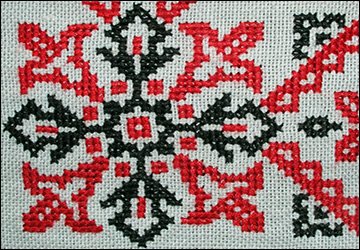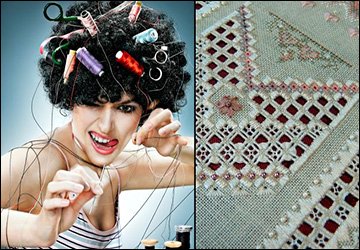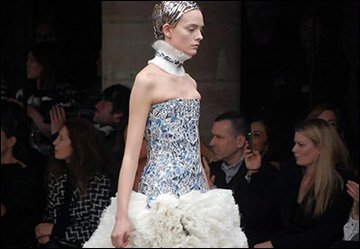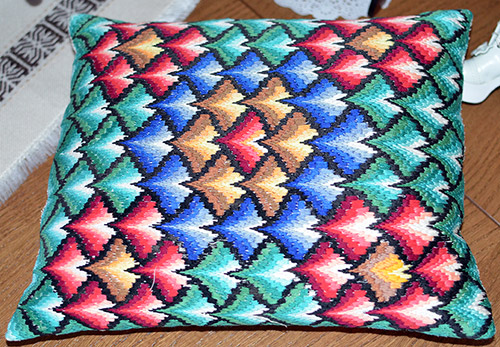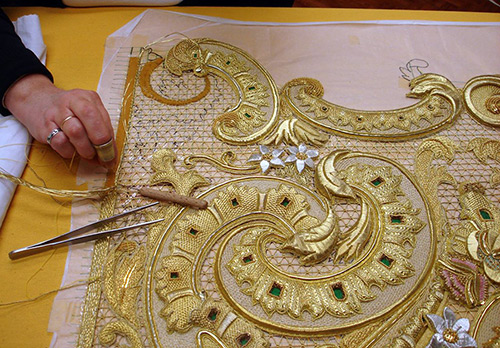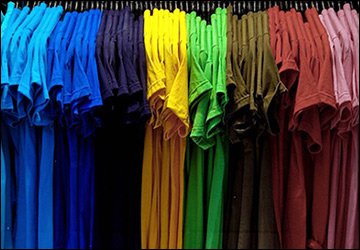Art
Chinese embroidery with silk threads
China is the birthplace of silk. Silk production led the country to the development of silk production and Chinese embroidery, which originated over 3000 years ago. Silk-on-silk embroidery is the most exquisite, but it requires painstaking work and masterly skill of the embroiderer.
The pictures embroidered by the craftswomen are a real work of art. Transparent, airy embroideries that change color depending on the lighting have always been appreciated at the court of the emperor and in aristocratic families.
There are provinces in China where the most famous embroiderers work. These are Jiangsu, Hunan, Guangdong and Sichuan. Each province has its own style of embroidery, and they all admire with their beauty. They are called "Chinese schools of embroidery".
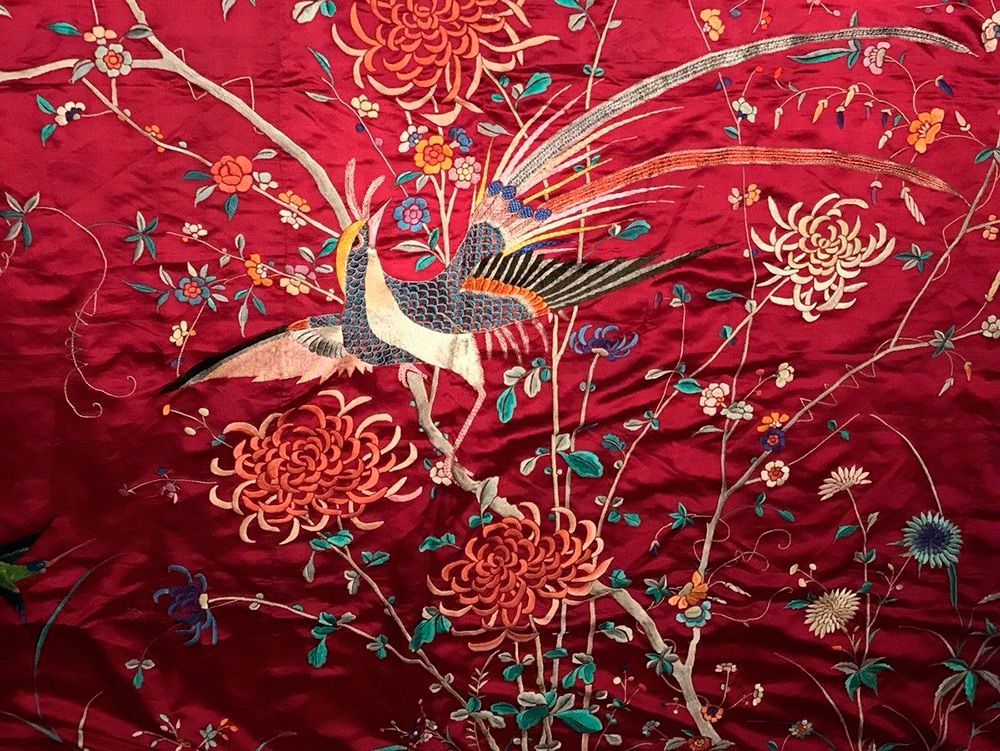
History of embroidery in China
Even during the Song dynasty (960-1279), the first embroidery workshop appeared and since then the art of embroidery has been developing, collecting all the best from the experience of the most worthy embroiderers. The frequency of overlapping stitches in Chinese embroidery is three times higher than in the best French tapestries.
The world famous embroidery school is located in the Jiangsu province of Suzhou. Suzhou embroidery has a 2 thousand year history. The city of Suzhou is still the center of silk embroidery in China. This city is one of the most visited cities by tourists. The Chinese are proud of him and call this area "Heaven on Earth". You should probably agree with them, even if you have not yet had to see this piece of paradise, because the beauty of embroidery could arise only when surrounded by the beauty of nature.
Many foreigners who have visited Suzhou talk about its resemblance to Venice. And Marco Polo, who visited here in 1276, called the city such lofty words as “great” and “noble”.
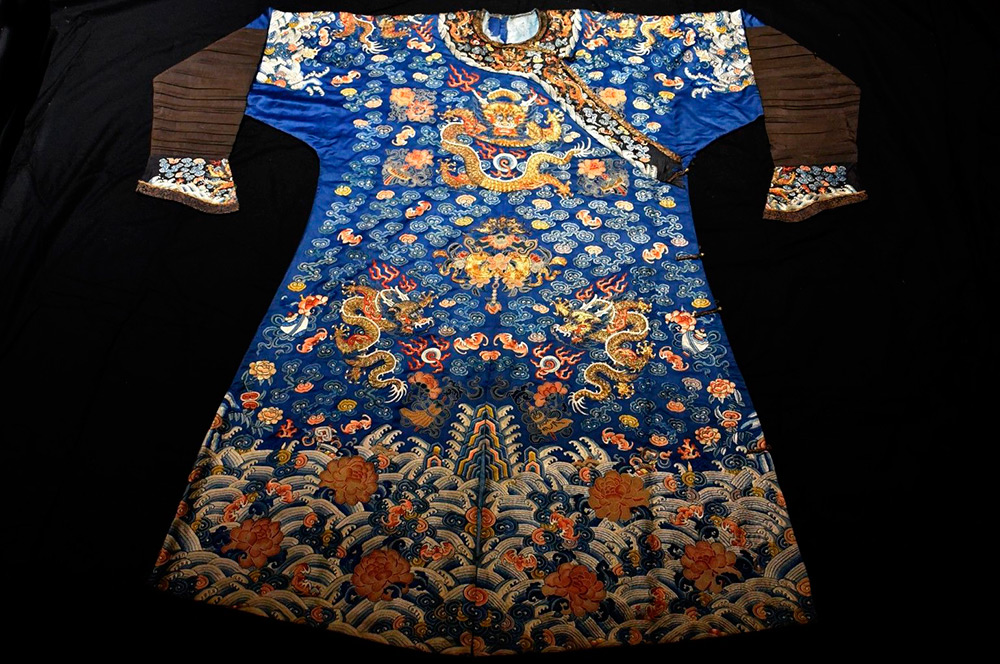
In ancient times in Suzhou, almost every family was engaged in breeding silkworms for silk threads, and girls taught embroidery... The names of the streets in Suzhou retain evidence that silk threads and embroidery were of great importance for the city, for example, "silk thread lane", "flower embroidery street" and many others. Depending on the income of the family, threads of various denominations were used in embroidery. In wealthy families, embroidery could be decorated with precious stones.
Chinese embroiderers know dozens of different stitches and use up to 1000 types of embroidery threads. The works of Chinese craftswomen are distinguished by their subtlety and complex patterns. Their kittens, tigers, cats and dogs on the finished embroidery seem to be alive, you can see every hair of the animal.
If embroiderers of Suzhou love to depict kittens on their embroideries, then in Hunan province they prefer tigers and lions. These embroideries are distinguished by their clear lines and bright colors. In Chinese embroidery, both landscape subjects and floral still lifes are depicted, and therefore, embroidering, they often copy paintings.
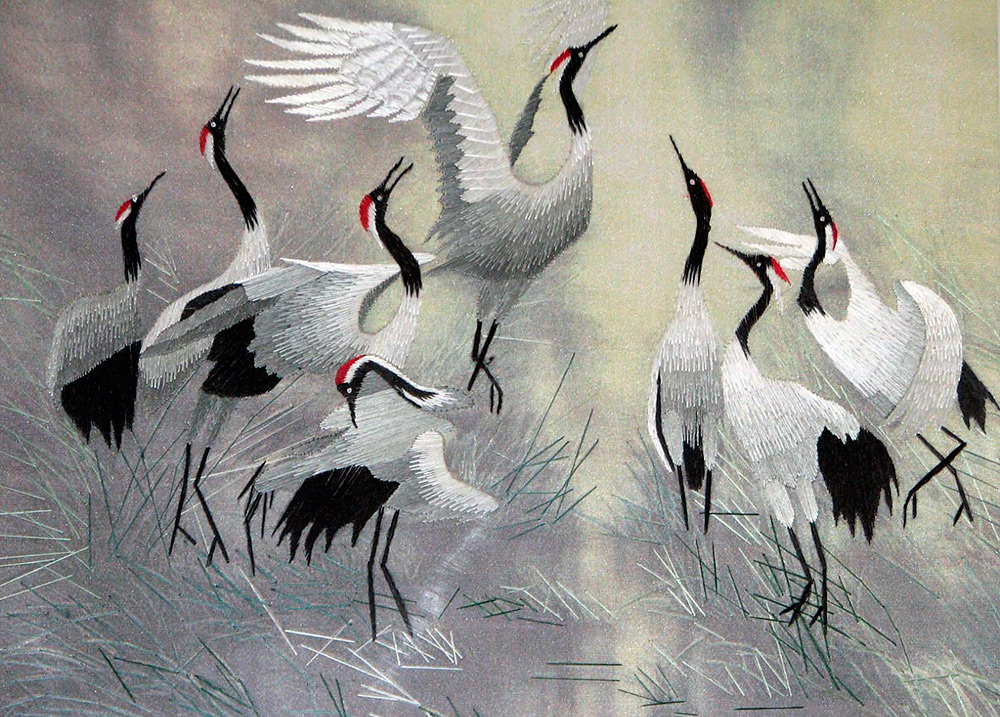
The embroidered images are three-dimensional and realistic. The embroideries of Chinese craftswomen surprise and delight with skillful and unusual work, but here it should be noted that the silk threads they use are also unusual. They are dyed by hand for each embroidery. The silk thread has the shape of an octahedron, which allows it to be colored up to one and a half thousand shades. And the light falling on it is refracted and reflected in different color shades, creating a sense of reality.
When the embroiderer puts the threads in different directions, the effect of the necessary light and shade is achieved. When passing from one tone to another, the threads are selected thinner and thinner. A distinctive feature of silk is its sheen. Light shimmers, reflected or refracted in the silk fiber.And the threads, playing with light overflows, create the mobility of the image, which acquires volume and seems to come to life.
The threads retain their brightness for many years. They lie on the surface of the canvas, creating the finest texture in which light is reflected and sparkled. Such works create a sense of airspace and a state of reality.

In Guangdong province, craftswomen love to embroider fabulous creatures: dragons and the phoenix bird. Chinese myths and legends tell about this bird for many thousands of years, from the beginning of Chinese civilization, and embroidery appeared in Guangdong for about 1000 years. This embroidery has an extraordinary richness of colors, unique patterns.
Guangdong products are distinguished by embroidery in gold and silver thread. Craftswomen first embroider with silk or cotton threads, and then, when the image becomes convex, cover the embroidery with gold or silver threads.
Sometimes, to create a bulge, cotton wool is placed, sheathed with silk or a layer of silver and gold threads. This kind of embroidery makes the product look three-dimensional. In Guangdong embroidery, you can find, in addition to silk threads, woolen or cotton. The embroidery is distinguished by rich compositions and contrasting colors.
Sichuan embroidery appeared a little earlier, more than 1000 years ago, and has been admiring its beauty ever since. It uses about 100 types of stitches and seams. Sichuan silk embroidery masters prefer to embroider flowers, birds, fish and insects. But there is also an image of landscapes and people. Sichuan embroidery has short and graceful stitches.
The embroidery of each Chinese school delight us with the accuracy and thoroughness of the work, the iridescent shine of the threads. The peculiarities of the Chinese people, their philosophical doctrine of nature, determined the main features that characterize the symbolism of ornamentation and color. In embroidered products, birds, flowers and any objects are closely related to the people's ideas about life, nature and happiness.
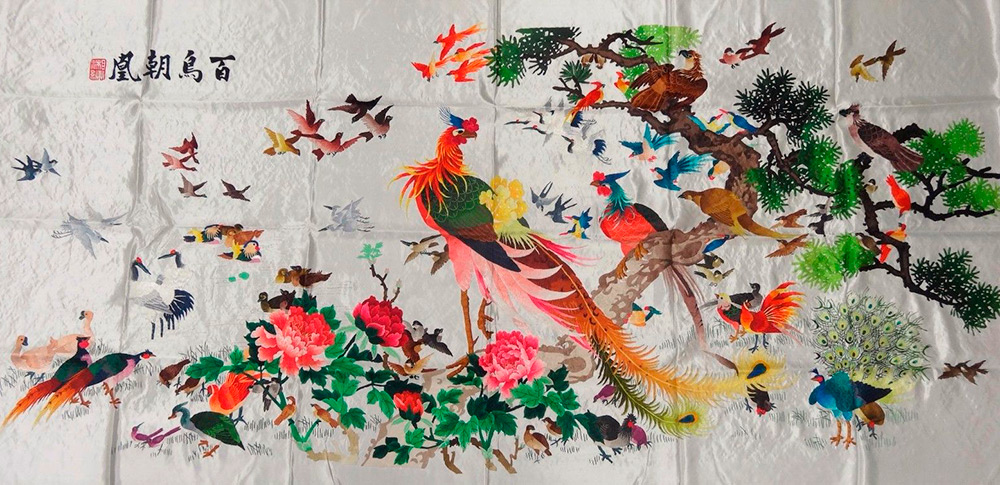
Some craftswomen sat down to work only in favorable weather, when the sun is shining, birds are chirping and a warm, quiet breeze slightly tilts the heads of fragrant flowers. In the weather, when the wind was blowing, the rain was pouring, or the sky was frowning, they did not take up work. The craftswomen believed that the embroidery they perform should be filled with their good feelings, it is then that they will be able to express their wonderful sensations, the spirituality of thought.
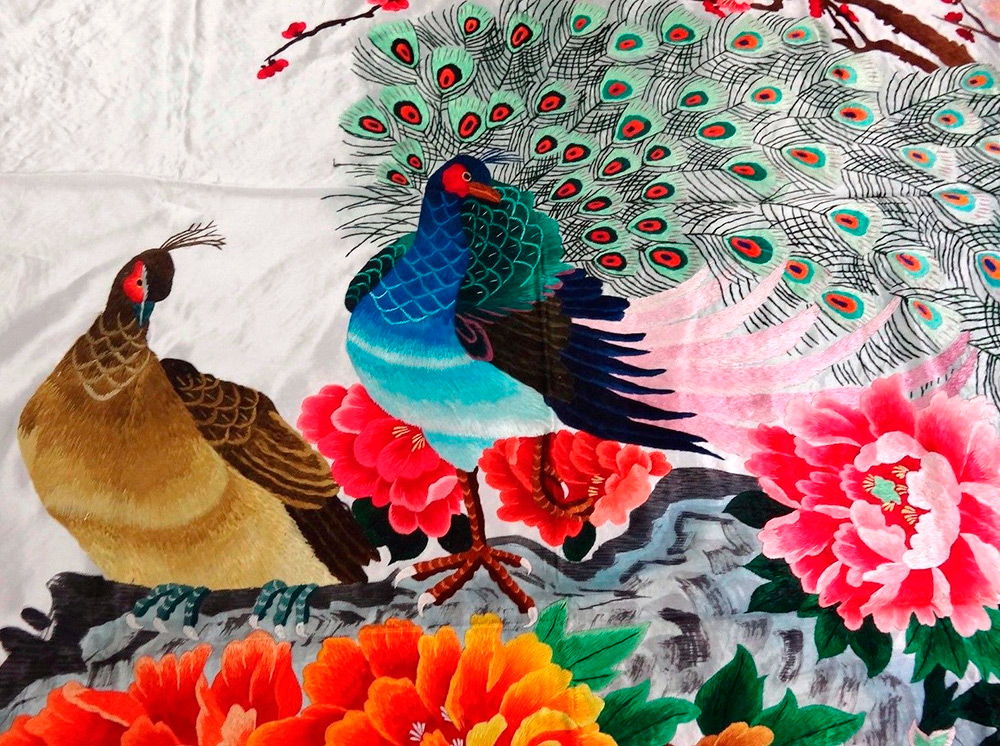
Chinese silk embroidery - colors and symbols
In China, embroidery has been everywhere for a long time: on clothes, shoes, linen, fans, handbags, umbrellas. And each symbol and image had its own special purpose.
The main colors in Chinese silk embroidery are:
White - the personification of the highest Yin, a symbol of purity;
Blue - the personification of the highest Yang, the symbol of the sky;
Red - symbols of fire, happiness, joy;
Yellow - symbols of the earth, power;
Black - a symbol of water, eternity, space.
And favorite images are:
Fishes - a symbol of success;
Butterflies - a symbol of joy, happiness;
Birds - a symbol of freedom and joy.
Plums, peaches - a symbol of fertility and abundance;
Lotus flowers - a symbol of loyalty.
For the Chinese, the peony is the true king of flowers. He personifies love, wealth.
Each image in the embroidery had a certain meaning and wish to the owner of the embroidered product. For example, images of a butterfly are wishes for happiness; a tiger - strength, an official on a horse - a successful career.
Over time, craftswomen even began to embroider portraits. This kind of embroidery is called “realistic”. A unique silk-embroidered portrait of the Queen of Italy was presented to Italy in 1909.
Different stitches and seams are made in embroidery. For example, in the "Freehand stitch" style, stitches of different lengths are used, in the work there is an imposition of numerous silk layers with threads of different colors and directions. These techniques allow you to achieve "three-dimensionality", the effect of the play of light, and realism.
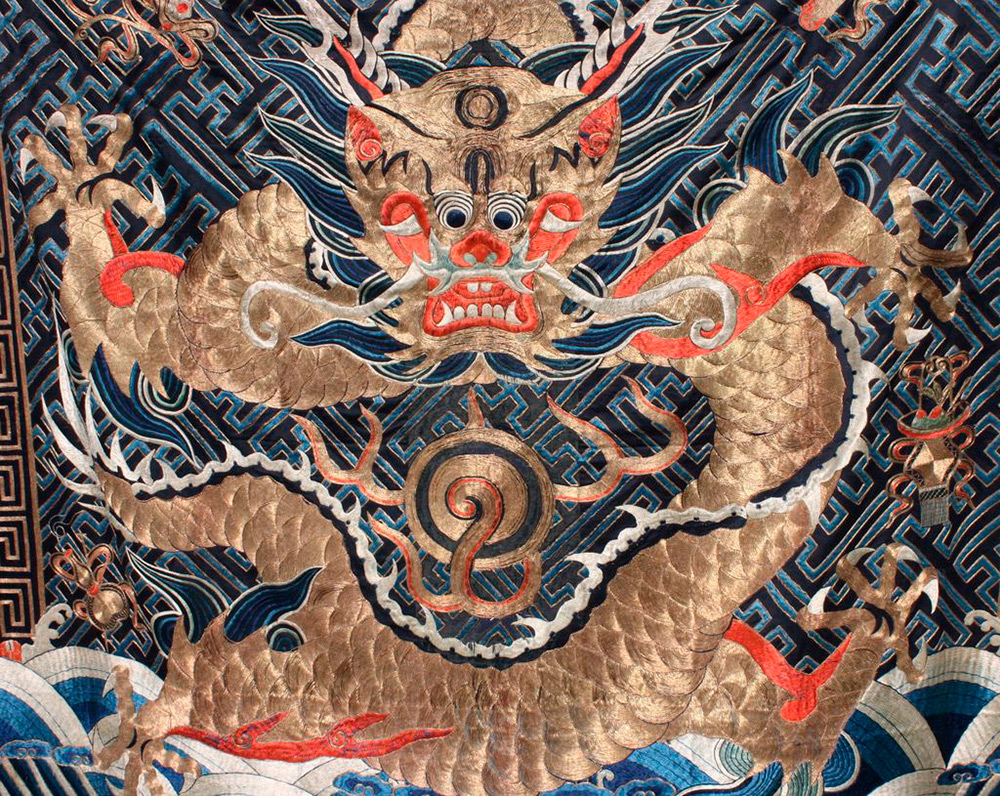
Chinese silk embroidery is a laborious and creative process; embroiderers work on many embroidery for several months or more than a year.To achieve mastery, Chinese girls were taught from the age of 4-5. The art of embroidery amazed and delighted everyone so much that legends were made about the embroiderers. It was said that they use needles as thick as hair, and the colors of the threads are so bright that they dazzle the eyes, and the people, birds, and flowers depicted on their embroideries seem to be alive.
All that remains is to admire the Chinese hard work and patience once again. In small embroidery, you can count up to 80 - 100 shades of various colors, and in large ones this number reaches a thousand.
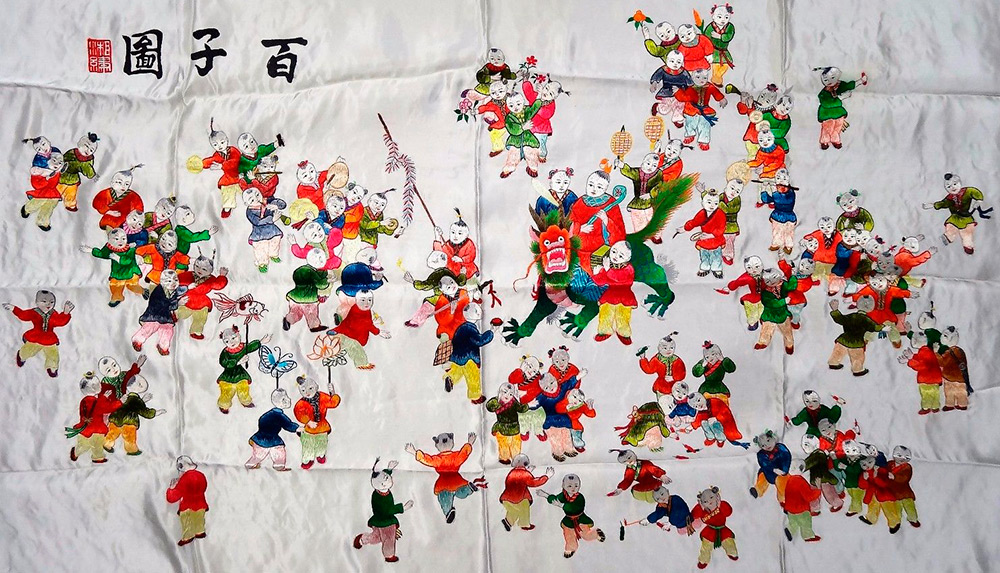
Embroidery of pictures with silk threads on silk
The creation of paintings from silk threads is an extremely painstaking task, sometimes it takes months for one painting, and for some years. Double-sided embroidery is considered especially time consuming. This embroidery is amazing not only for its beauty, this work is a mystery. In double-sided embroidery on each side, the craftswoman sometimes creates two different plots, the embroidery is performed on translucent silk, and the knots are carefully hidden, and they cannot be seen from either side.
Double-sided paintings are framed in special frames, which in turn are also works of art. They contain carving elements and a rotation knot, which makes it easier to see the picture from both sides.
Embroidery paintings are quite expensive, but if any of you have the opportunity to purchase them, imagine that this is an unusually beautiful and valuable gift for a loved one. Such embroidery will decorate the house and will remain for several generations for many years, it will become a real heirloom that will be passed on to the most reliable hands, to a person with refined taste and a kind heart.
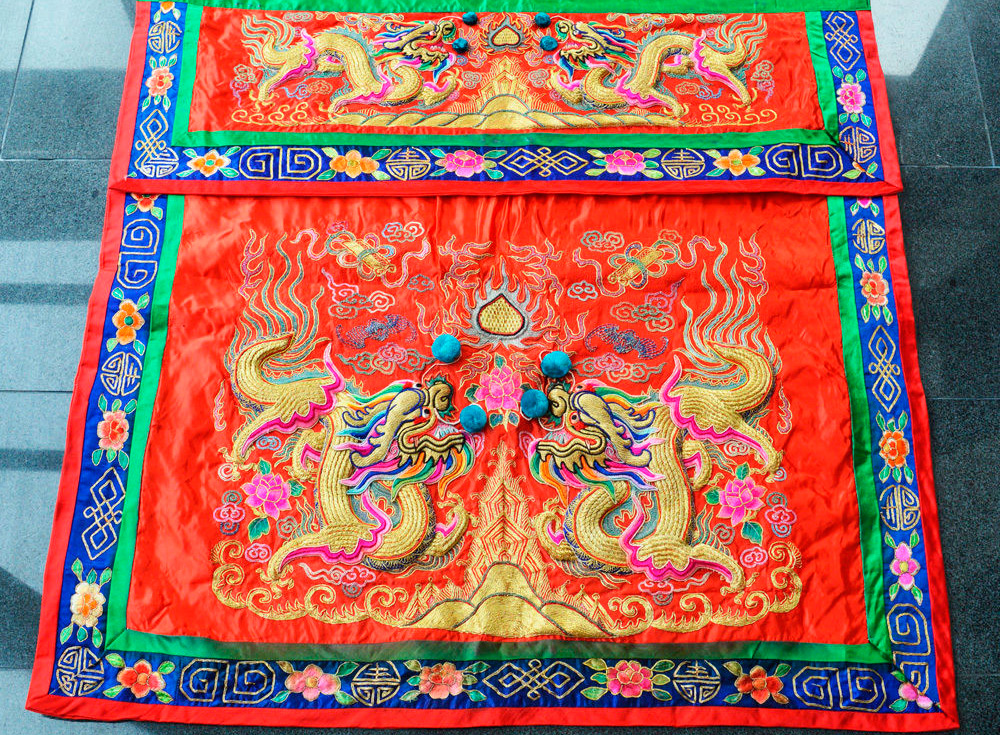
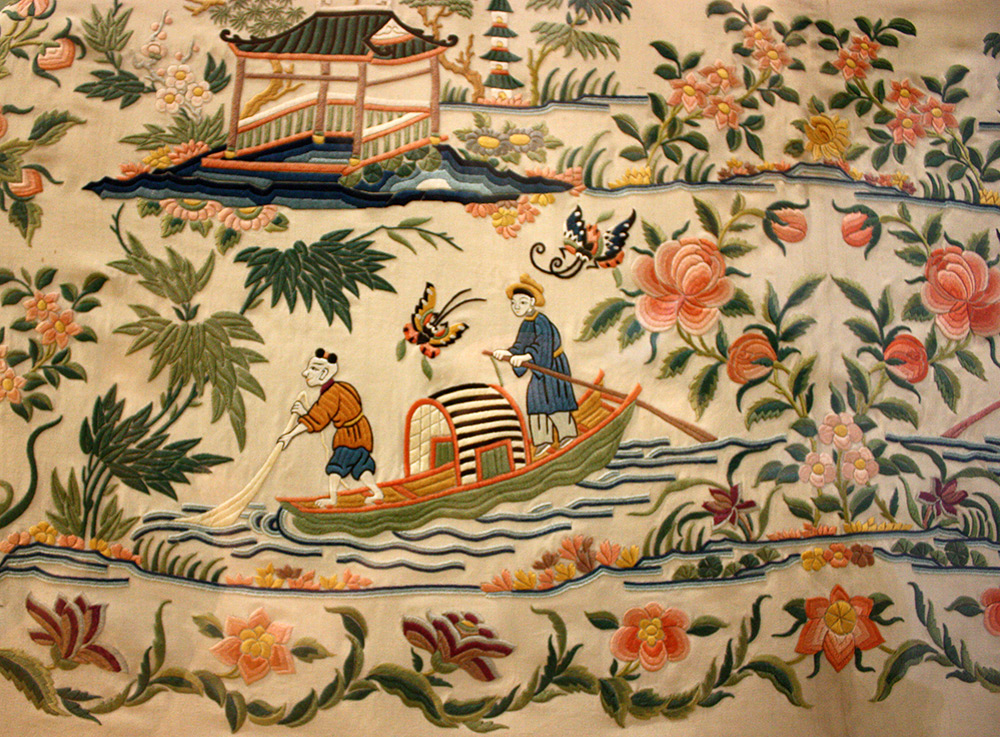
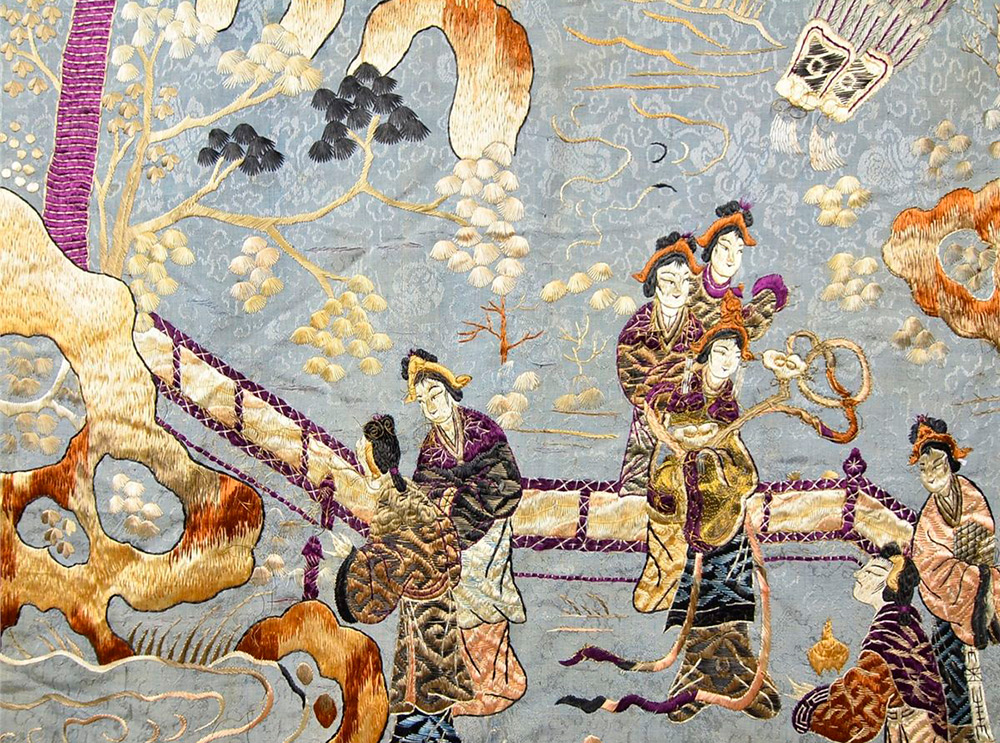
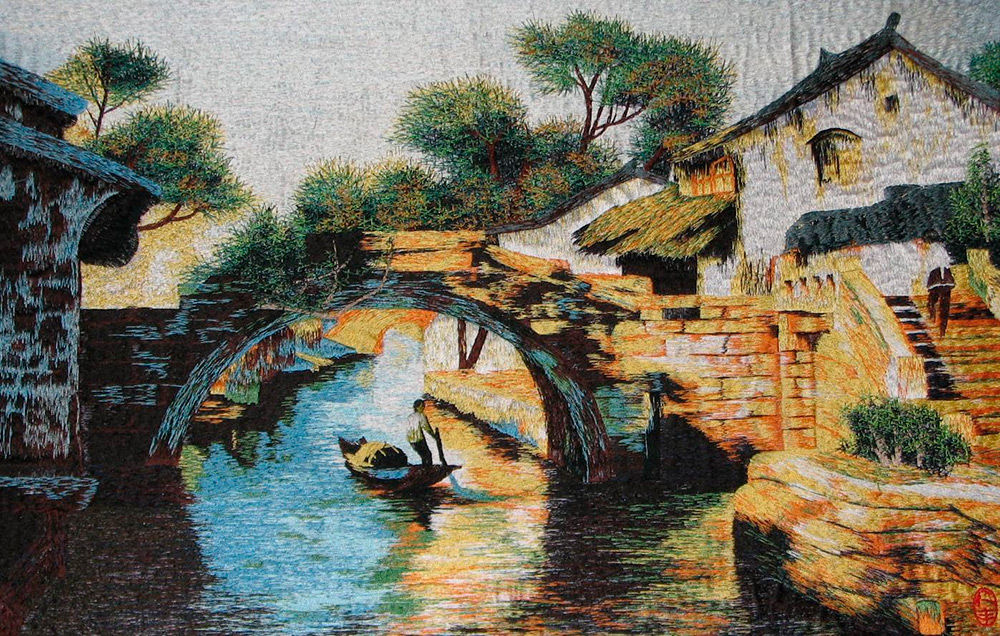
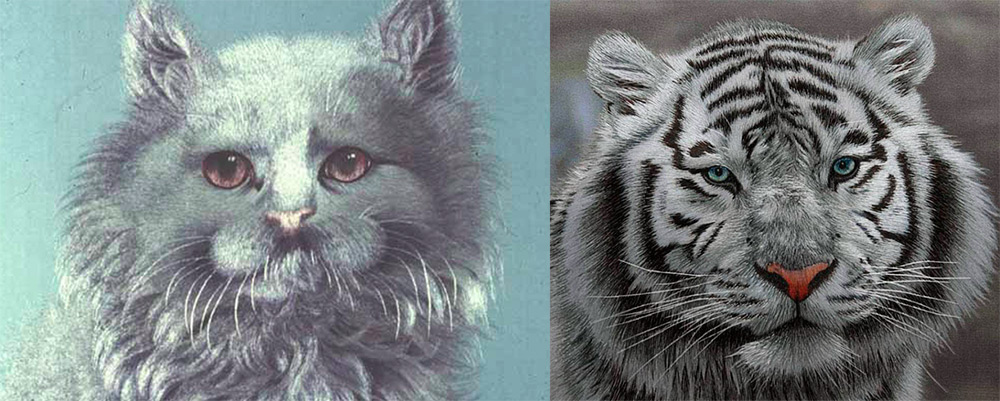
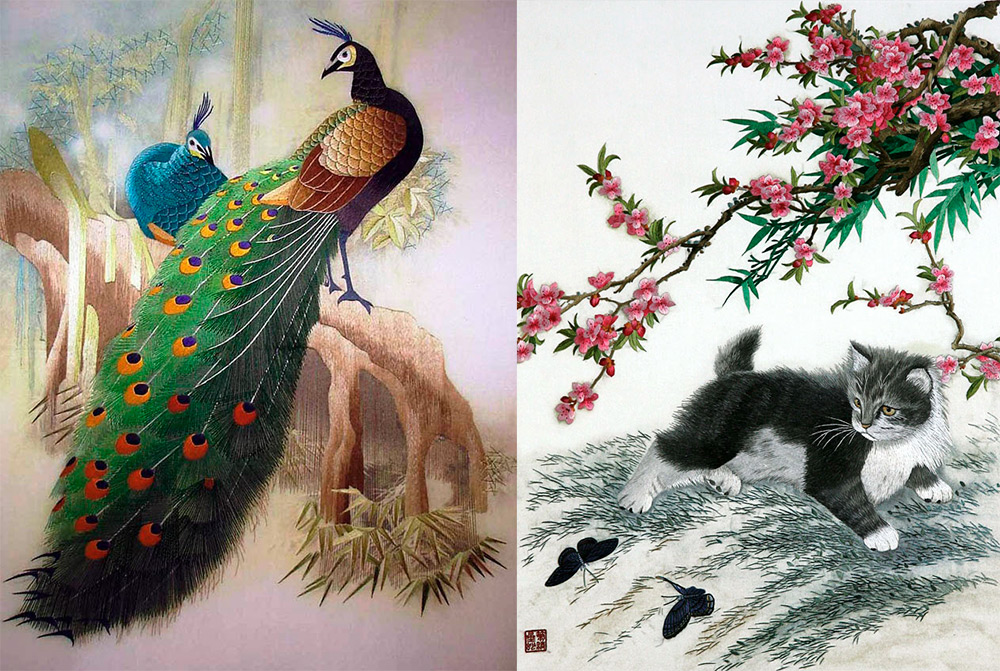
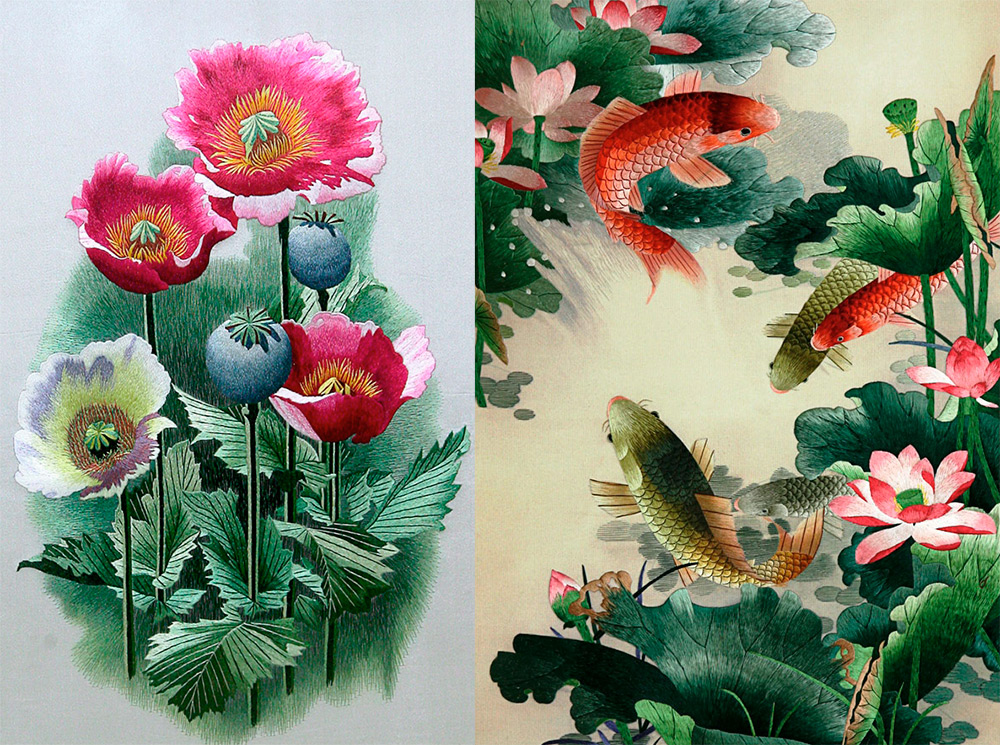
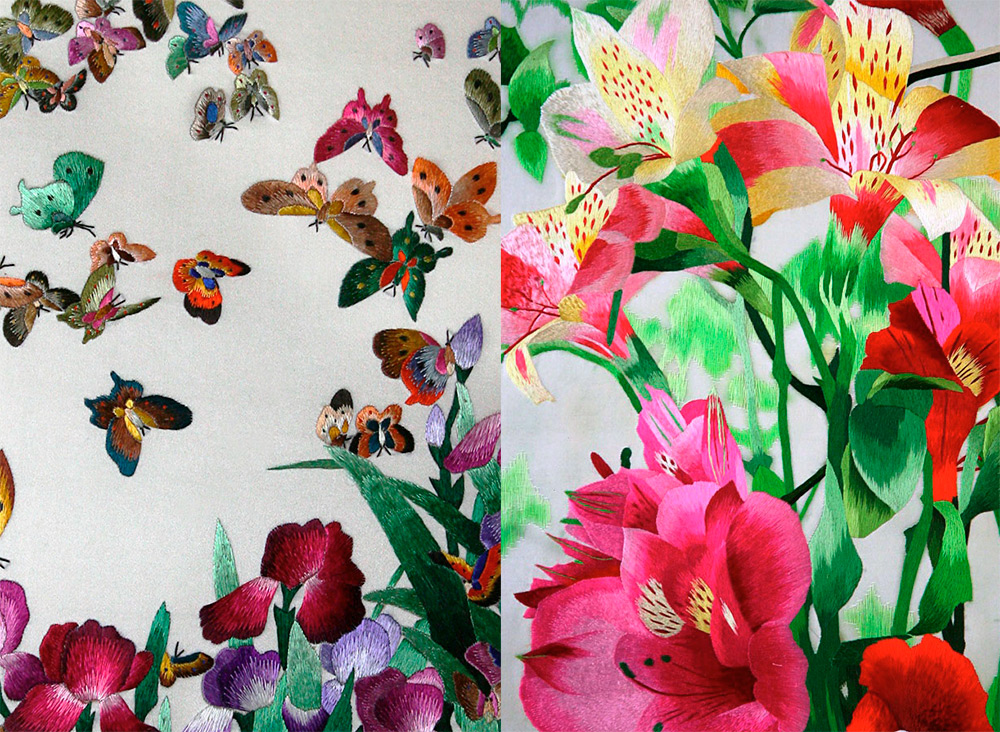
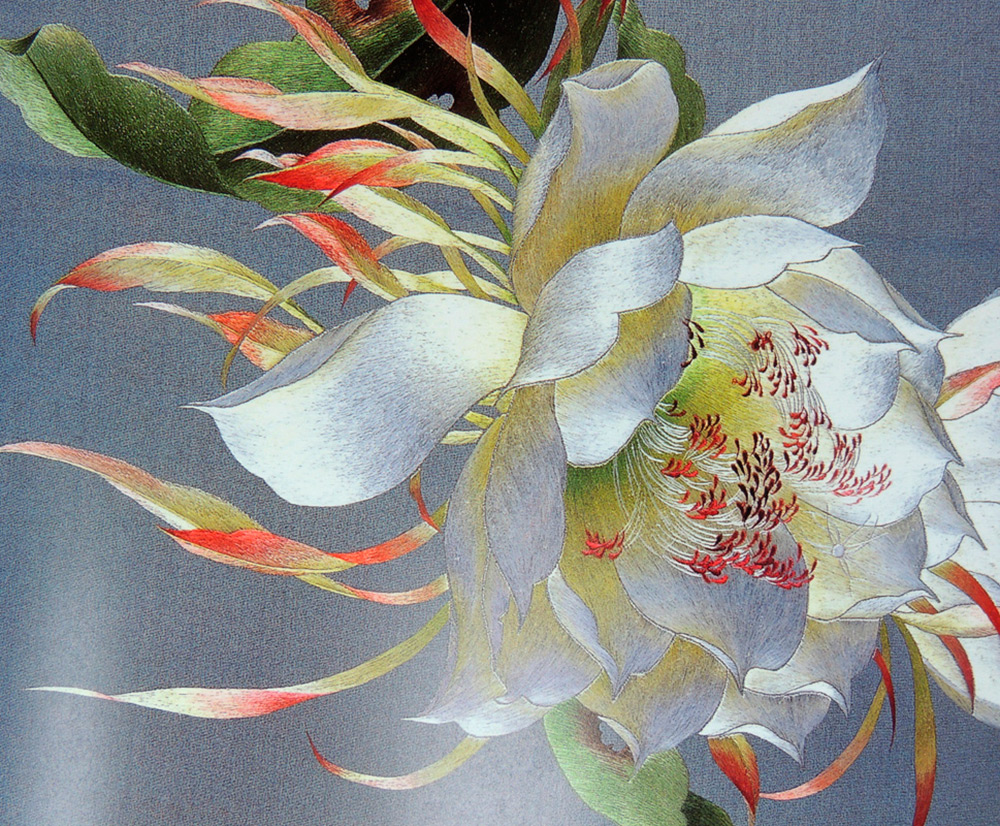
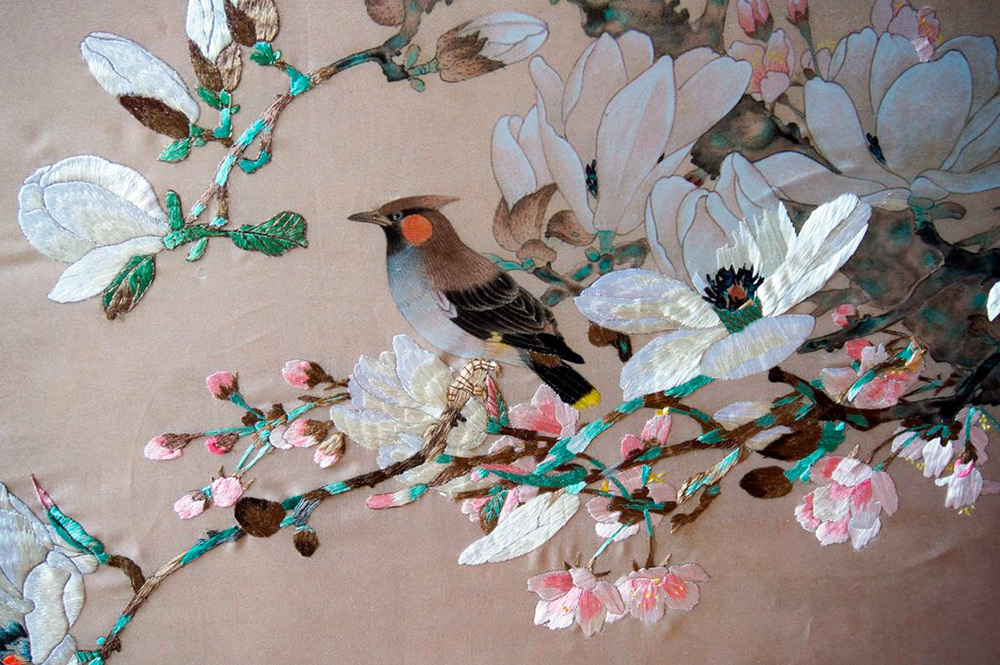
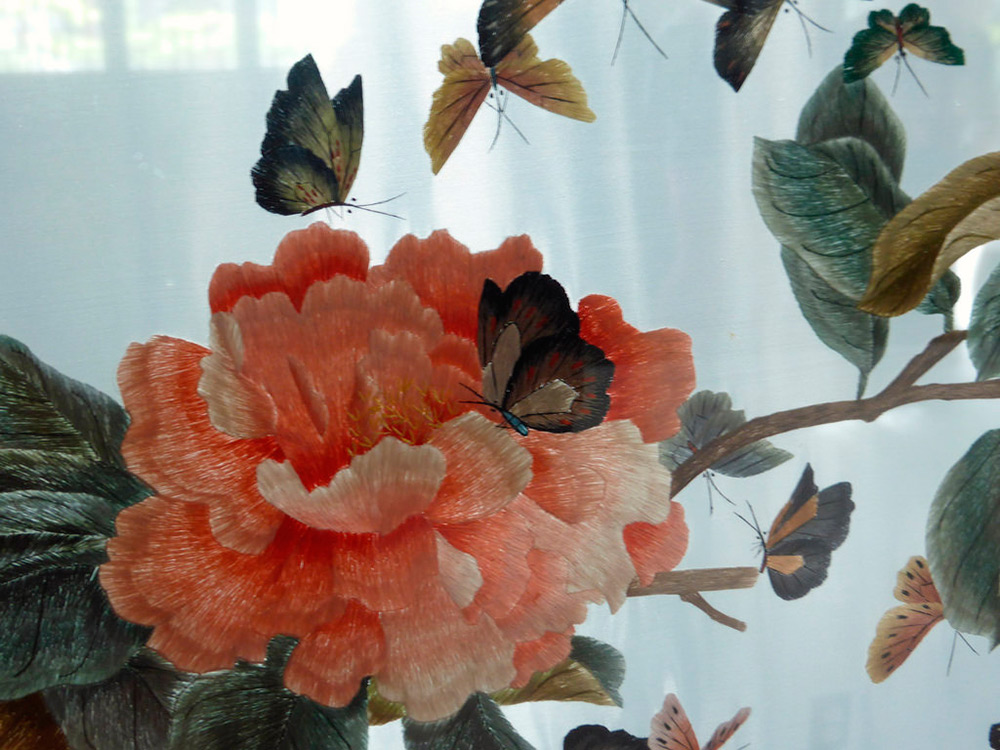
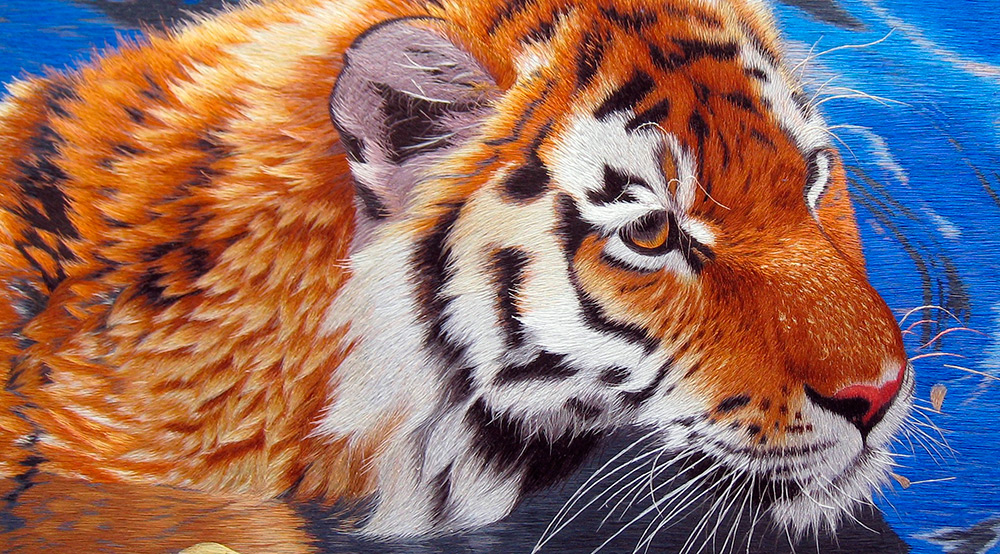
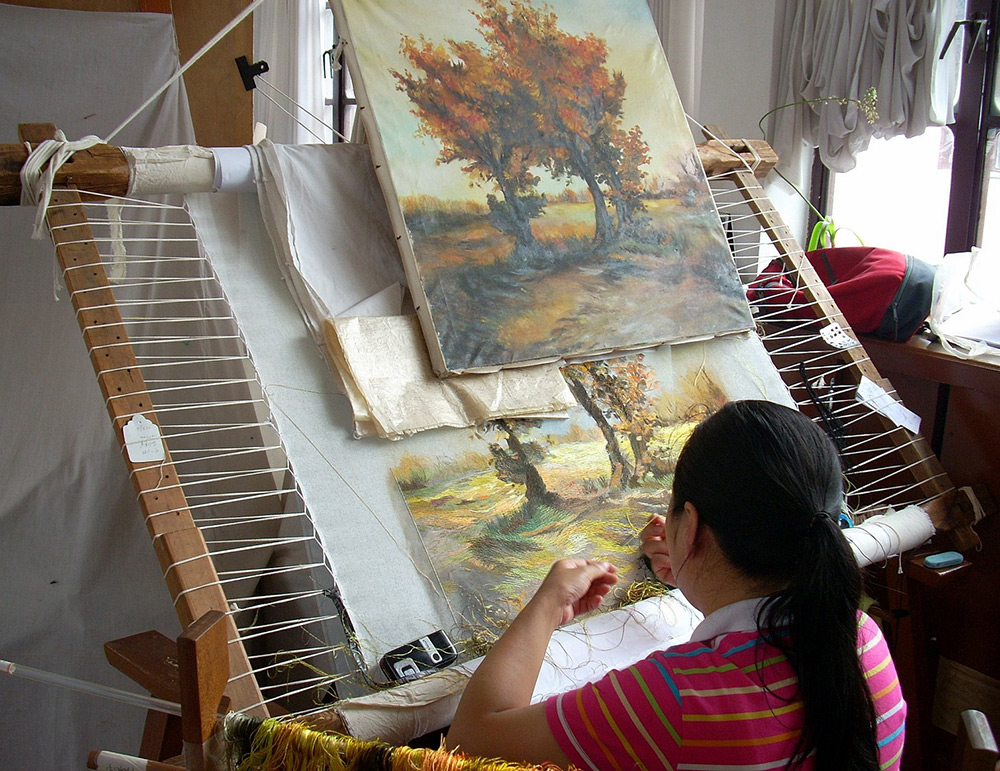
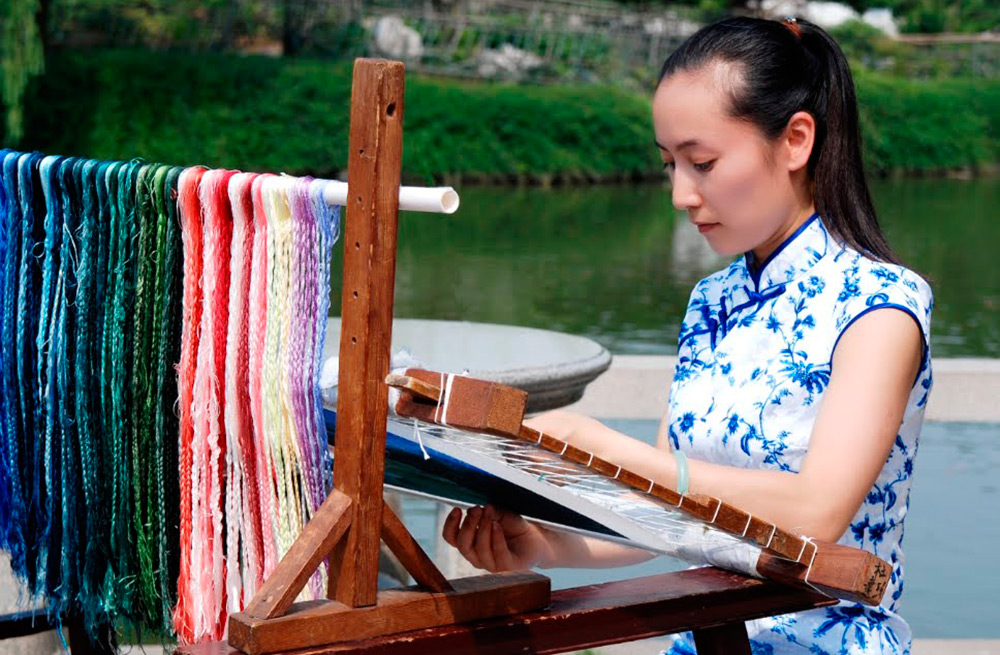
Comments and Reviews
Add a comment
Rating news
Shades of clothing that make women look younger
What shades of hair make women younger: rules and photos
Funny wedding dresses - photos and ideas
12 most expensive down jackets for the winter
How to look 25 at 40: tips from supermodels
Beautiful schoolgirls
Anti-aging haircuts and hairstyles for women
Fashionable skirts for autumn and winter
Fashionable women's trousers for the cold season
Fashionable and stylish sandals for summer 2024
Spring-summer 2024
 Fashionable dresses and tops with thin spaghetti straps
Fashionable dresses and tops with thin spaghetti straps
 Bandana tops: how to wear stylishly and beautifully
Bandana tops: how to wear stylishly and beautifully
 How to put together the perfect men's wardrobe for the summer
How to put together the perfect men's wardrobe for the summer
 Fashionable shorts for spring-summer 2024
Fashionable shorts for spring-summer 2024
 Fashionable skirts for spring-summer 2024: a guide to online shopping
Fashionable skirts for spring-summer 2024: a guide to online shopping
 The most fashionable dresses spring-summer 2024: styles and colors
The most fashionable dresses spring-summer 2024: styles and colors
 Fashionable total look 2024: ideas of images and trends
Fashionable total look 2024: ideas of images and trends
